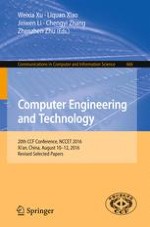2016 | Buch
Computer Engineering and Technology
20th CCF Conference, NCCET 2016, Xi'an, China, August 10-12, 2016, Revised Selected Papers
herausgegeben von: Weixia Xu, Liquan Xiao, Jinwen Li, Chengyi Zhang, Zhenzhen Zhu
Verlag: Springer Singapore
Buchreihe : Communications in Computer and Information Science
